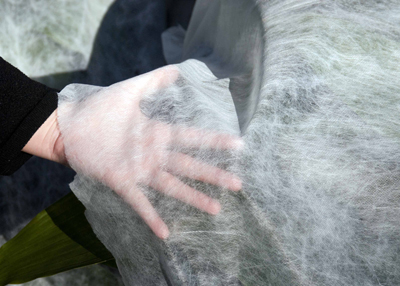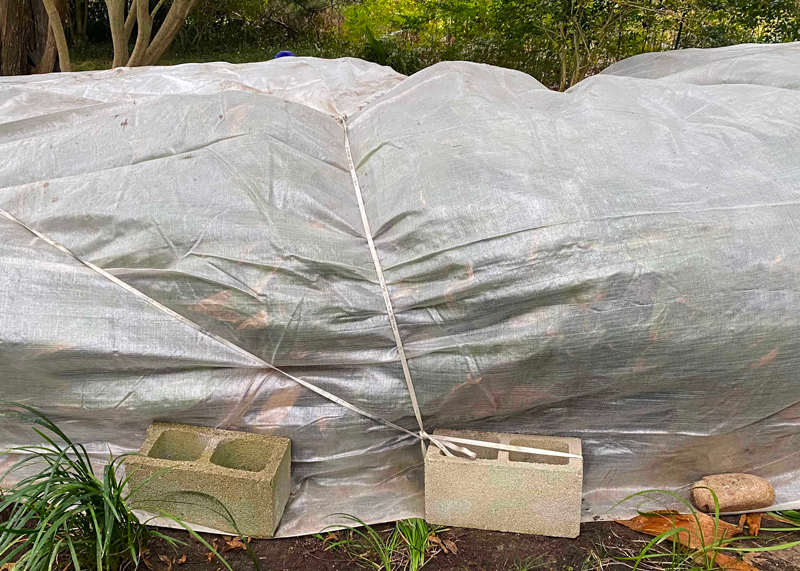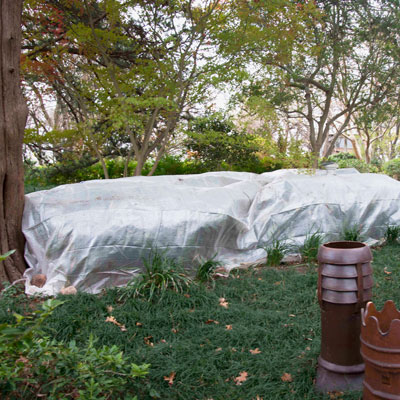Cold Weather on the Horizon
It’s hard to know just how cold it’s going to be in 3 or 4 days, but something bad is headed our way. I’ll start by urging you to stay very current on your local forecasts. Your plants and your pipes could be counting on wise choices you’ll need to be making.
Things have been changing rapidly, and it sounds like that’s going to continue. Rainy, warmish, then windy, then cold and windy, then warm, then on into what looks like a few days of very cold weather. The fronts seem to be coming through at a really rapid pace.

The good news is that our plants have been exposed to prior cold, so this isn’t going to catch them unprepared. They are acclimated, unlike cold spells of the past couple of winters. And they aren’t budding out and getting ready to grow like they were in February 2021 when the bad cold did record damage.
And, other good news is that as cold as the forecast temperatures may be, they’re still not as cold as what we faced in February 2021.
And more good news is is that it’s apparently not going to stay as cold for as long. Duration of a cold spell is almost as damaging as how low the temperatures drop.
Still, if you don’t take proper precautions, some of your prized plants could be hurt by what’s pouring its way out of the arctic as you’re reading this.

Here are my guidelines…
• Be sure your plants have been watered deeply. If your part of the state received soaking rains you should be fine. Otherwise, water a day or more ahead of the cold.
• Container plants are especially vulnerable. They dry out more quickly, so be doubly sure that they’re watered. If your area is going to drop below freezing, either cover them or move them into protection. You lose 20 degrees of winter hardiness when a plant’s root ball freezes.

• Cover shrubs that are marginally winter hardy for your part of the state. No matter where you are in Texas, there will be several popular plants that aren’t reliably durable to the cold your city experiences. Frost cloth can pull them through. If you’re in doubt, refer to the USDA’s old 1990 Hardiness Zone Map. I believe it’s more accurate than either of their more recent updates (2012 and 2023). I’ll have more to say on that in another week or two here.

• “Frost cloth” is a lightweight gauze-like material that stops the blasts of cold wind across plants’ leaves while it also absorbs radiant energy from the sun during the daytime and stores it in the soil to be released up around the leaves at night. Frost cloth can make 7 or 8 degrees of difference in whether your plants die or are damaged. I have used it for 40 years, and I can tell you that it really works.
• Old sheets, burlap and other fabrics are of some help if you simply cannot find frost cloth, but they will absorb moisture if it rains. Frost cloth does not. Frost cloth is measurably better.
• If precipitation is forecast, devise some means of staking or looping your frost cloth so that it won’t weight down the tops of the plants. You need that insulation of air, and you don’t want it crushing your plants, either.

• The frost cloth must be taken completely to the ground and secured in place with bricks, river rocks or some other weights. I leave decorative river rocks at one end of my beds for ease of use when cold rolls in. My frost cloth is pre-cut for each bed that might need to be covered. I fold it up neatly and put it away in plastic trash bags with labels attached. It can often be reused for several cold spells, even for several years.
• Frost cloth can be left in place for days and even weeks. White types allow air, water, and light to penetrate, so your plants will do just fine. They’ll be fresh and green when you uncover them once danger of additional cold has passed. I’ve left plantings of cast iron plants in our North Texas landscape covered from Christmas until late February.
• Disconnect all hoses from faucets. Cover exposed faucets. If your sprinkler system does not have a freeze override, put it in the “Off” position. Bring end-of-hose lawn sprinklers into the garage so that trapped moisture won’t freeze and rupture their internal workings. Bring water wands, water breakers and all other watering devices in for protection.
• Be sure pets and wild birds have fresh water that hasn’t frozen available during the freeze.
